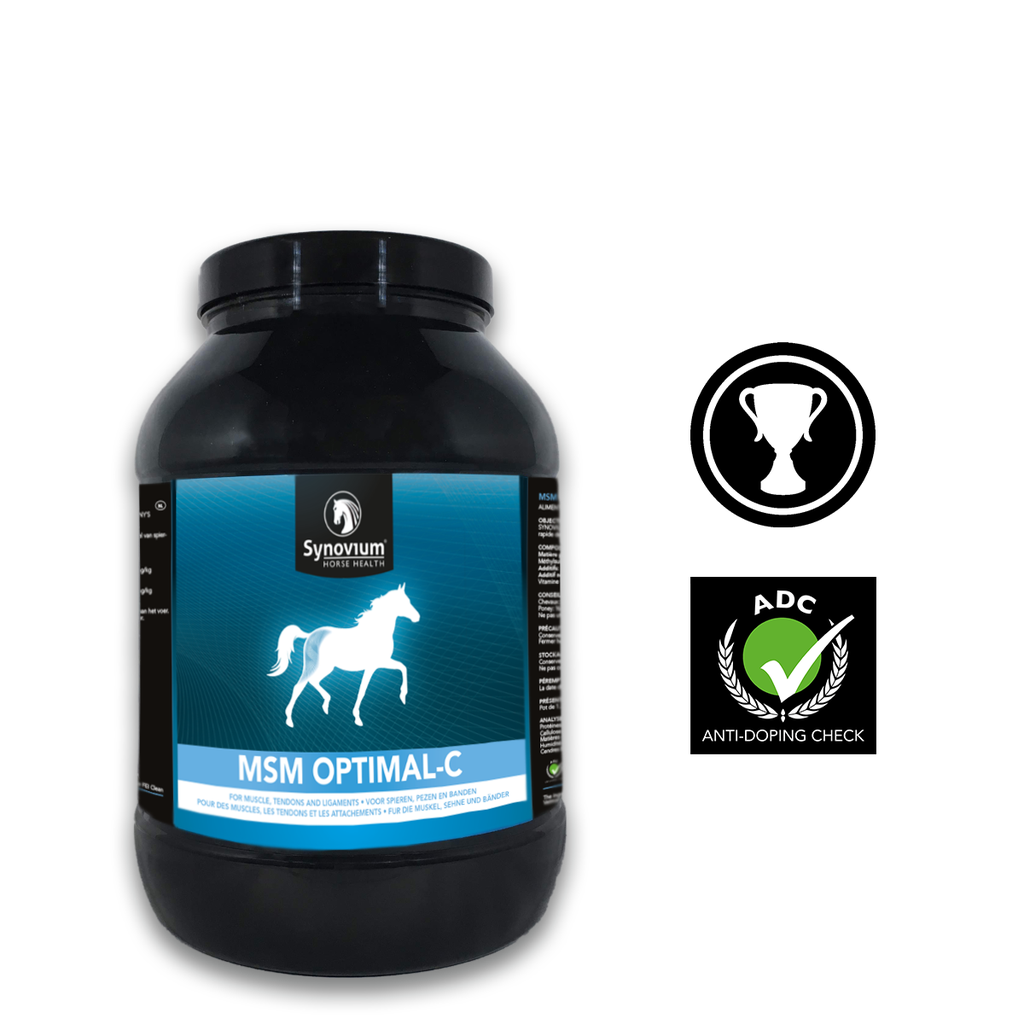1. Wong, T., Bloomer, R. J., Benjamin, R. L., & Buddington, R. K. (2018). Small intestinal absorption of methylsulfonylmethane (MSM) and accumulation of the sulfur moiety in selected tissues of mice. Nutrients, 10(1): 1-9.
2. Usha, P. R., & Naidu, M. U. R. (2004). Randomised, double-blind, parallel, placebo-controlled study of oral glucosamine, methylsulfonylmethane and their combination in osteoarthritis. Clinical Drug Investigation, 24(6): 353-363.
3. Higler, M. H., Brommer, H., L’Ami, J. J., de Grauw, J. C., Nielen, M., van Weeren, P. R., Laverty, S., Barneveld, A., & Back, W. (2014). The effects of three-month oral supplementation with a nutraceutical and exercise on the locomotor pattern of aged horses. Equine Veterinary Journal, 46(5): 611-617.
4. Marãn, G., Mũoz-Escassi, B., Manley, W., García, C., Cayado, P., de La Muela, M. S., Olábarri, B., Len, R., & Vara, E. (2008). The effect of methyl sulphonyl methane supplementation on biomarkers of oxidative stress in sport horses following jumping exercise. Acta Veterinaria Scandinavica, 50(1): 1-9.
5. Sp, N., Kang, D., Kim, D., Lee, H., Park, Y., Kim, I., Lee, H., Cho, B., Jang, K., & Yang, Y. (2019). Methylsulfonylmethane inhibits cortisol‑induced stress through p53‑mediated SDHA/HPRT1 expression in racehorse skeletal muscle cells: A primary step against exercise stress. Experimental and Therapeutic Medicine, 19(1): 214-222.
6. Williams, C. A. (2016). Horse species symposium: The effect of oxidative stress during exercise in the horse. Journal of Animal Science, 94(10): 4067-4075.
